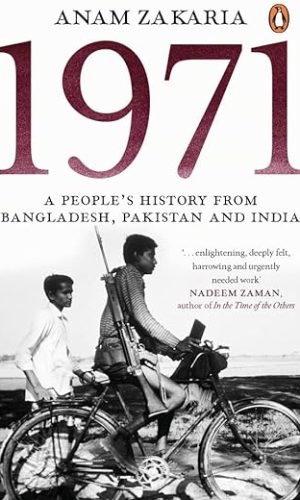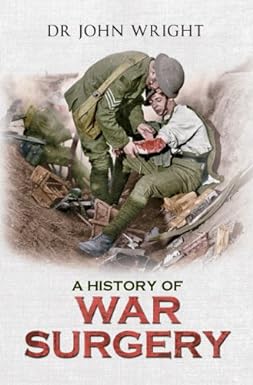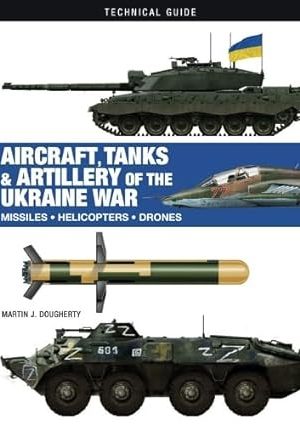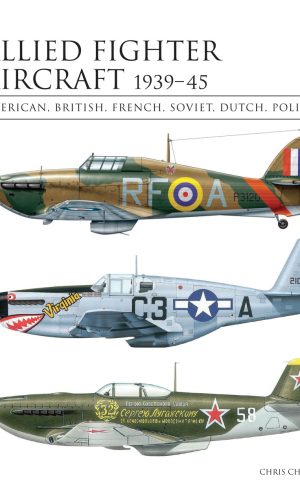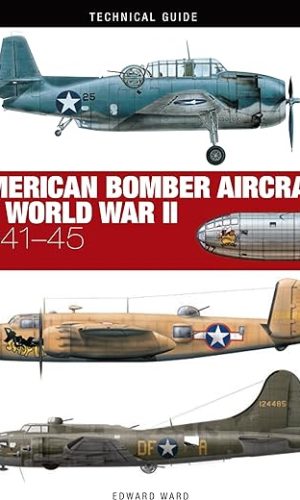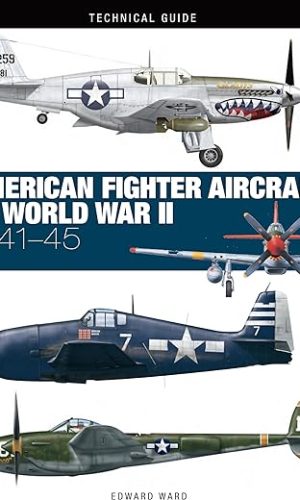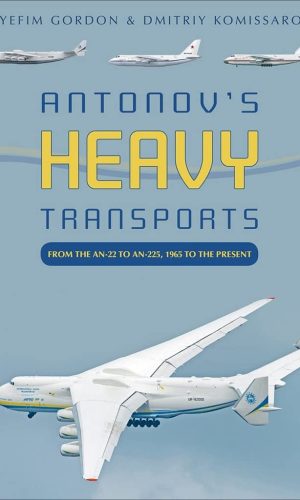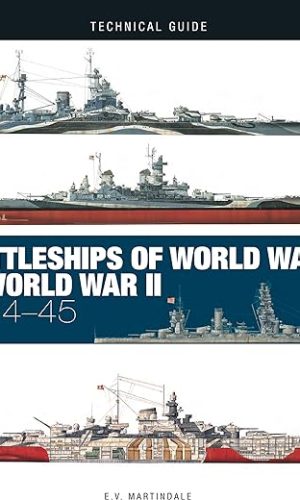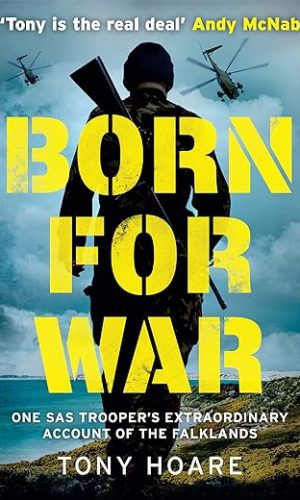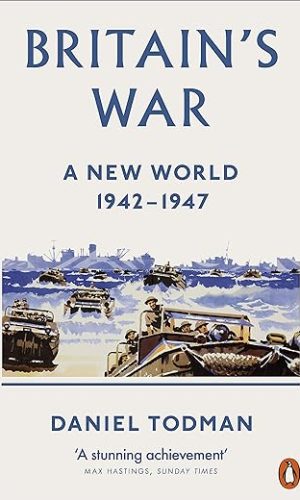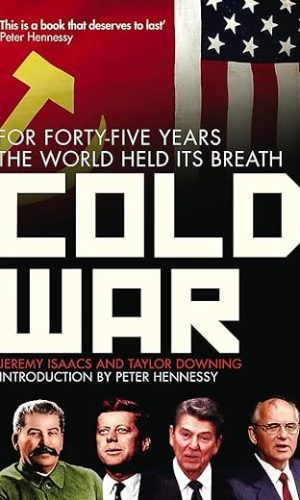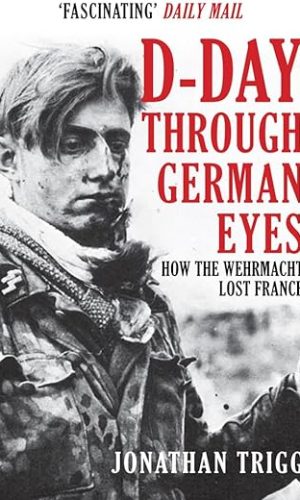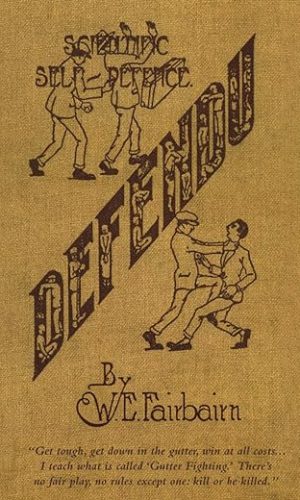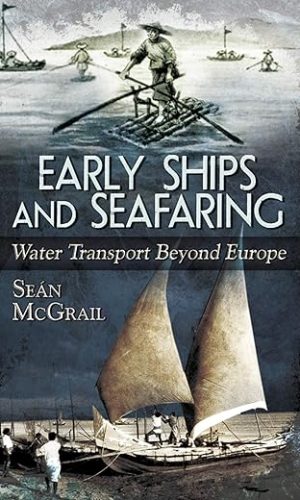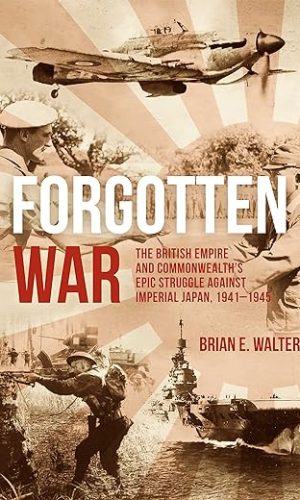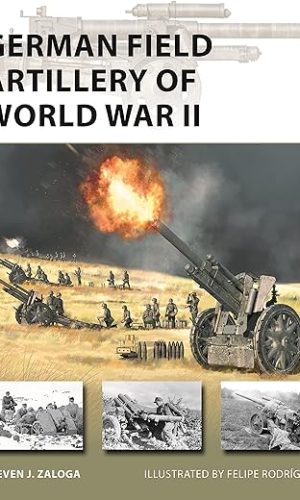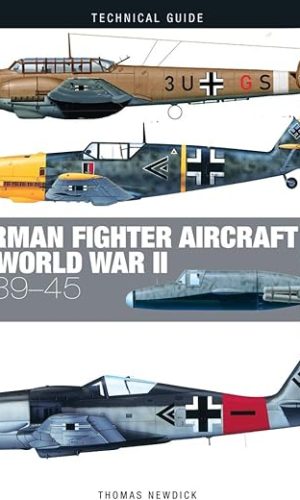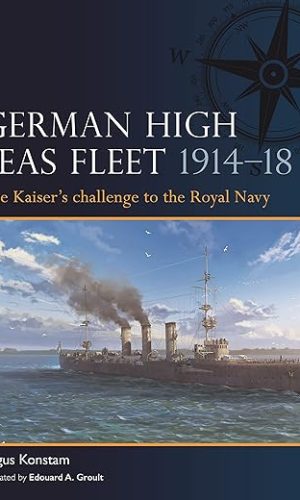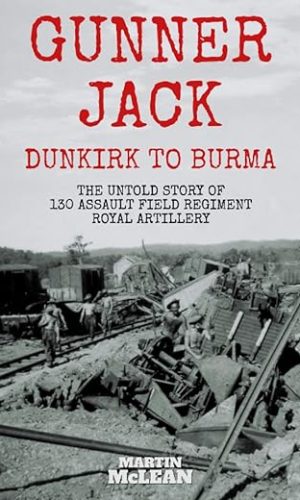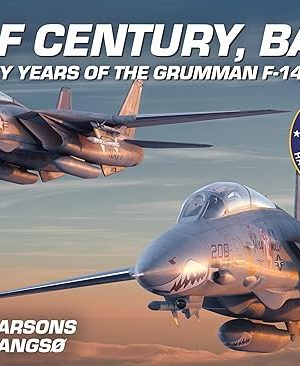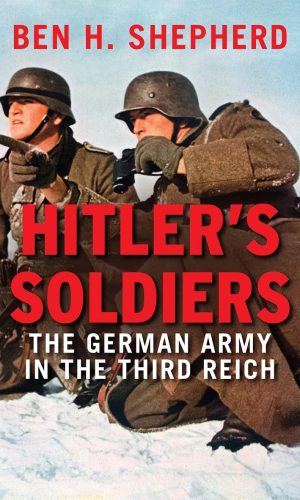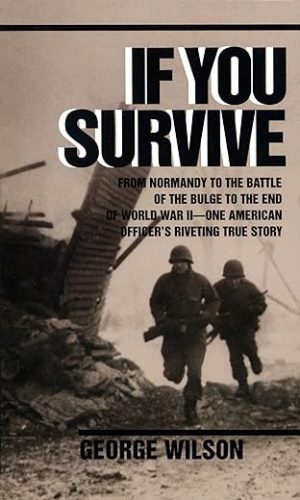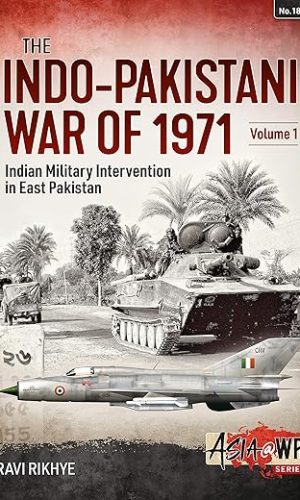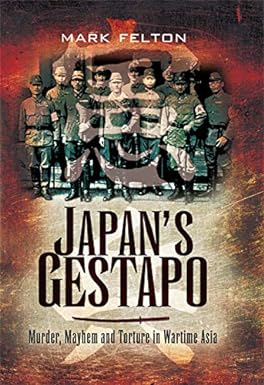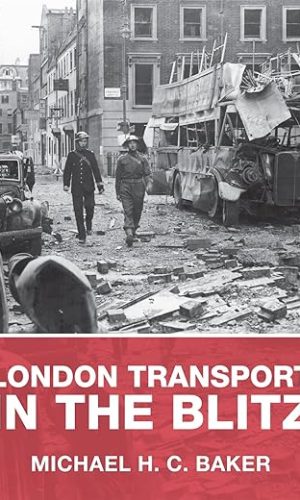Military History
-
1971: A People’s History from Bangladesh, Pakistan and India
The year 1971 exists everywhere in Bangladesh-on its roads, in sculptures, in its museums and oral history projects, in its curriculum, in people’s homes and their stories, and in political discourse. It marks the birth of the nation, its liberation. More than 1000 miles away, in Pakistan too, 1971 marks a watershed moment, its memories sitting uncomfortably in public imagination. It is remembered as the ‘Fall of Dacca’, the dismemberment of Pakistan or the third Indo-Pak war. In India, 1971 represents something else-the story of humanitarian intervention, of triumph and valour that paved the way for India’s rise as a military power, the beginning of its journey to becoming a regional superpower.
Navigating the widely varied terrain that is 1971 across Pakistan, Bangladesh and India, Anam Zakaria sifts through three distinct state narratives, and studies the institutionalization of the memory of the year and its events. Through a personal journey, she juxtaposes state narratives with people’s history on the ground, bringing forth the nuanced experiences of those who lived through the war. Using intergenerational interviews, textbook analyses, visits to schools and travels to museums and sites commemorating 1971, Zakaria explores the ways in which the year is remembered and forgotten across countries, generations and communities.
Read more
£18.00£20.90 -
A History of War Surgery
Since antiquity, war surgery has been a profession demanding a special kind of human: one able to face seemingly insurmountable problems; one able to keep a lucid mind and steady hands in extraordinary circumstances; one able to shoulder tremendous burdens; and one able to harden himself or herself, time and again, to failure and self-doubt. It is, and always has been, a harrowing business, and only for the brave. Dr John Wright charts the evolution of war surgery from ancient times to the present day, investigating its breakthroughs, its pitfalls, and the people and conflicts that have shaped it. But above all, this is a personal history, calling on the first-hand accounts of the surgeons, soldiers, medics, nurses, stretcher-bearers, and many others who have served in battle and come face-to-face with its most appalling horrors. This is not a book for the faint-hearted. It is one that searches for and delivers the truth about those who, with unerring skill, courage and determination, endeavour to undo the terrible damage we habitually inflict upon ourselves.Read more
£7.30A History of War Surgery
£7.30 -
After the Final Whistle: The First Rugby World Cup and the First World War
When Britain’s empire went to war in August 1914, rugby players were the first to volunteer: they led from the front and paid a disproportionate price. When the Armistice came after four long years, their war game was over; even as the last echo of the guns of November faded, it was time to play rugby again. As Allied troops of all nations waited to return home, sport occupied their minds and bodies. In 1919, a grateful Mother Country hosted a rugby tournament for the King’s Cup, to be presented by King George V at Twickenham Stadium. It was a moment of triumph, a celebration of military victory, of Allied unity and of rugby values, moral and physical. Never before had teams from Australia, Canada, New Zealand, South Africa, Britain and France been assembled in one place. Rugby held the first ever ‘World Cup’ – football would not play its own version until 1930. In 2015 the modern Rugby World Cup returns to England and Twickenham as the world remembers the Centenary of the Great War. With a foreword by Jason Leonard, this is the story of rugby’s journey through the First World War to its first World Cup, and how those values endure today.
Read more
£10.40£12.30 -
Aircraft and Aviation Stamps: A Collector’s Guide (Transport Philately Series)
The author has combined his two greatest interests: Transport and Stamp Collecting and brought them together in this series of books looking at the way postage stamps have led him to increase his knowledge of our world via his interest in all forms of transport world-wide. Philately (the collecting of stamps) itself is a fascinating hobby looking at the development of postal services in all its forms, designs of stamps that have evolved the Victorian Penny-Black to today’s creations, often artistic but dependant more and more on photography with greater or lesser degrees of digital manipulation. In his quest he has covered many unusual places that have only become more accessible with the advent of cheap air travel but has still found it necessary to use his own contacts, library of related books and more recently the internet to research his subject. Like all books in this series, they been laid out as global tour starting naturally in the UK and then travelling in an easterly direction through every continent – without, it should be added, crossing the International Date Line! Readers will not find every country included but a differing selection in each volume.Read more
£6.10£16.10 -
Aircraft, Tanks and Artillery of the Ukraine War (Technical Guides)
Illustrated with accurate artworks of aircraft, armoured fighting vehicles, artillery and missiles, Aircraft, Tanks & Artillery of the Ukraine War is a detailed guide to all the weaponry currently being deployed in the War in Ukraine. The War in Ukraine is being fought using tanks, aircraft and artillery dating from the Cold War deployed alongside state-of-the-art weapons systems supplied by Western powers. Arranged chronologically by type, Aircraft, Tanks & Artillery of the Ukraine War offers a complete survey of the weapons deployed, from the venerable Ilyushin Il-76 strategic airlifter and T-64 medium tank to the latest American-made M142 HIMARS rocket artillery and the Bayraktar TB2 combat drone. The guide is illustrated with accurate profile artworks of fighter aircraft, bombers, attack helicopters, tanks, APCs, artillery systems, missile launchers and unmanned aerial vehicles from Russian, NATO, Turkish and other sources. Illustrated with more than 100 detailed artworks, Aircraft, Tanks & Artillery of the Ukraine War is an essential reference guide for those who want to understand the war being fought in Europe today.
Read more
£17.10 -
Allied Fighter Aircraft 1939–45: American, British, French, Soviet, Dutch, Polish (Identification Guide)
Allied Fighters 1939–45 offers an highly-illustrated guide to Allied fighter aircraft that fought in Europe during World War II. Featuring all the main models flown by the Allied air forces from 1939 to 1945, the book offers a wealth of detail, including unit markings, organization, numbers of aircraft flown by campaign and exhaustive specifications for each model. The book is arranged first by country and then chronologically by campaign so that every aspect of the air war in Europe is covered. The guide features fighters from throughout World War II, including early models, such as the Morane Saulnier MS.406C.1, Hawker Hurricane Mk I and Fokker D XXI, and the most advanced fighters of the period, such as the Lavochkin La-7, P-51K Mustang and Gloster Meteor Mk I.The book also covers aircraft that were used for air-to-air combat (Supermarine Spitfire), ground attack (P-47 Thunderbolt), bomber escort (P-51B Mustang), night defence (Bristol Beaufighter) and photographic reconnaissance (P-38 Lightning). Packed with more than 200 profiles and dozens of archive photographs of every major Allied fighter aircraft, Allied Fighters 1939–45 is a core reference volume for modellers and World War II aviation enthusiasts.Read more
£15.60£19.00 -
American Bomber Aircraft of World War II: 1941-45 (Technical Guides)
The United States built the best strategic bombers of World War II, and by the end of the conflict America’s bombers dominated the skies in both Europe and the Pacific. American Bomber Aircraft of World War II is a detailed guide to all the bombers deployed by the USAAF and US Navy from 1941 to 1945.
Organised chronologically, this book includes all the great types of the era, such as the B-17 Flying Fortress, which led the daylight bombing campaign against German industrial targets; the B-24 Liberator, which carried out the famous raid on the Ploesti oil refinery in Romania in 1943; the rugged Grumman TBF Avenger torpedo bomber, flown by US Navy pilots at the Battle Midway in that key turning point in the Pacific War; and the B-29 Superfortress, the aircraft most responsible for degrading Japan’s ability to wage war with their constant aerial attacks throughout 1944 and 1945.
The guide is illustrated with profile artworks and three-views, as well as two-page dynamic artworks of some of the more famous aircraft in service, such as the highly- adaptable B-25 Mitchell, which served in every theatre in a variety of roles, the Douglas Dauntless SBD naval scout plane, and the Martin B-26 Marauder, one of the fastest medium bombers of its era.
Illustrated with more than 100 authentic artworks with accurate markings and camouflage, American Bomber Aircraft of World War II is an essential reference guide for modellers and military aviation enthusiasts.Read more
£13.70£17.10 -
American Civil War For Dummies, 2nd Edition
Take a walk through history with this guide for lifelong learnersThe American Civil War is one of the most fascinating and impactful periods in American history. Besides bringing about the end of slavery, the war had many important economic and social effects that continue to shape the history and present-day realities of the American people.
In American Civil War For Dummies, you’ll get an accessible, bird’s-eye view of one of history’s greatest conflicts. All the must-know details of the war are covered here, from the Battle of Gettysburg to the Emancipation Proclamation. You’ll also find:
- Descriptions of the experiences of Black Americans, in both the North and the South, during the war
- Explorations of how slavery and civil rights fit into the social, political, and economic context of the time
- Profiles of some of the most famous generals in the war, including Robert E. Lee and Ulysses S. Grant
Take a moment to get a hands-on education in this critical point in American history. Get American Civil War For Dummies now!
Read more
£13.70£17.10American Civil War For Dummies, 2nd Edition
£13.70£17.10 -
American Fighter Aircraft of World War II: 1941-45 (Technical Guides)
The United States Army Air Force (USAAF) came into its own during World War II, building some of the premier fighters of the era. American Fighter Aircraft of World War II is a detailed guide to all the fighter aircraft types deployed by the USAAF and US Navy from 1941 to 1945.
Organised chronologically, this book includes all-time greats, such as the highly- adaptable P-51 Mustang bomber escort, the carrier-based F6F Hellcat – which outperformed the legendary Japanese A6M Zero fighter – and the Lockheed P-38 Lightning, with its distinctive twin-boom design; as well as lesser-known types, such as the Boeing P-26 Peashooter, the high-altitude Republic P-43 Lancer, and the Lockheed P-80 Shooting Star, the USAAF’s only operational jet fighter during the war. The entries are accompanied by exhaustive captions and specifications.
The guide is illustrated with profile artworks and three-views, as well as two-page dynamic artworks of some of the more famous aircraft in service, such as the P-40 Warhawk ground-attack variant, the twin-engined P-61 Black Widow night-fighter, and the robust P-47 Thunderbolt fighter-bomber.
Illustrated with more than 100 authentic artworks with accurate markings and camouflage, American Fighter Aircraft of World War II is an essential reference guide for modellers and military aviation enthusiasts.Read more
£13.70£17.10 -
Antonov’s Heavy Transports: From the An-22 to An-225, 1965 to the Present
This book charts the development and service history of the Antonov design bureau’s heavy transport aircraft. In the late 1950s, the Antonov design bureau began developing the An-22 heavy military transport, intended to carry 50 tons. Powered by four 15,000 hp turboprops, it was the world’s heaviest transport when it first flew in February 1965. The four-turbofan An-124 was again the world’s most capable airlifter when it emerged in 1982, with a payload of 120 tons. It proved its worth in military and humanitarian operations and earned acclaim as a commercial freighter after 1991 for carrying heavy and outsized items. The unique six-engined An-225 “”Mriya”” was created for carrying the Buran space shuttle. Despite the demise of the Buran program, the aircraft found use on the heavy/outsized cargo transportation market. It is illustrated by a wealth of new photos and color artwork, as well as line drawings.-Read more
£44.80£55.10 -
Arctic Convoys: Bletchley Park and the War for the Seas
An incisive account of the Arctic convoys, and the essential role Bletchley Park and Special Intelligence played in Allied success
Between 1941 and 1945, more than eight hundred shiploads of supplies were delivered to the Soviet Union protected by allied naval forces. Each journey was a battle against the elements, with turbulent seas, extreme cold, and the constant dread of torpedoes. These Arctic convoys have been mythologized as defenseless vessels at the mercy of deadly U-boats―but was this really the case?
David Kenyon explores the story of the war in the Arctic, revealing that the contest was more evenly balanced that previously thought. Battles included major ship engagements, aircraft carriers, and combat between surface ships. Amid this wide range of forces, Bletchley Park’s Naval Section played a decisive role in Arctic operations, with both sides relying heavily on Signals Intelligence to intercept and break each other’s codes. Kenyon presents a vivid picture of the Arctic theater of war, unearthing the full-scale campaign for naval supremacy in northern waters.Read more
£15.70£19.00 -
Battleships of World War I & World War II: 1914-45 (Technical Guides)
For centuries, battleships provided overwhelming firepower at sea. They were not only a major instrument of warfare, but a visible emblem of a nation’s power, wealth and pride. The rise of the aircraft carrier following the Japanese aerial strike on Pearl Harbor in 1941 highlighted the vulnerabilities of the battleship, bringing about its demise as a dominant class of warship.
This book offers a detailed guide to the major types of battleships to fight in the two World Wars. Explore HMS Dreadnought, the first of a class of fast, big-gun battleships to be developed at the beginning of the 20th century; see the great capital ships that exchanged salvos at the battle of Jutland, including the German battlecruiser Derfflinger, which sank the British battleship Queen Mary; find out about the destruction of HMS Hood, which exploded after exchanging fire with the Bismarck, which itself was sunk after a trans-Atlantic chase by a combination of battery fire and aircraft-launched torpedoes; and be amazed at the ‘super-battleship’ Yamato, which despite its size and firepower, made minimal contribution to Japan’s war effort and was sunk by air attack during the defence of Okinawa.
Illustrated with more than 120 vivid artworks and photographs, Technical Guide: Battleships of World War I and World War II is an essential reference guide for modellers and naval warfare enthusiasts.Read more
£13.70£17.10 -
Born For War: One SAS Trooper’s Extraordinary Account of the Falklands
‘A no holdout account of the Falklands War from a man who was in the fight.’ Andy McNab
Tony Hoare always knew he wanted to be in the SAS and so, after working his way through the ranks, he passed arduous SAS selection in 1978.
Less than four years later, Tony and his team were sent to the Falklands, just off the coast of Argentina, where tensions were rising and war was on the horizon. Nothing could have prepared him for what happened over the course of the next 12 weeks, as the Falkland Islands became a battleground between the British and Argentinians. As helicopters crashed and ships sank, Tony battled across treacherous terrain to help reclaim the islands from a fearsome enemy.
This is a thrilling account of the Falklands from a trooper who saw it all.
Read more
£8.70£9.50 -
Britain’s War: A New World, 1942-1947
WINNER OF THE TEMPLER MEDAL BOOK PRIZE 2020
A SPECTATOR, FINANCIAL TIMES AND DAILY TELEGRAPH BOOK OF THE YEAR 2020
‘A stunning achievement’ Max Hastings, Sunday Times
Part Two of Daniel Todman’s epic history of the Second World War opens with one of the greatest disasters in British military history – the fall of Singapore in February 1942. Unlike the aftermath of Dunkirk, there was no redeeming narrative available here – Britain had been defeated by a far smaller Japanese force in her grandly proclaimed, invincible Asian ‘fortress’.
The unique skill of Daniel Todman’s history lies in its never losing sight of the inter-connectedness of the British experience. The agony of Singapore, for example, is seen through the eyes of its inhabitants, of its defenders, of Churchill’s Cabinet and of ordinary people at home. Each stage of the war, from the nadir of early 1942 to the great series of victories in 1944-5 and on to Indian independence, is described both as it was understood at the time and in the light of the very latest historical research.
Britain’s War is a triumph of narrative, empathy and research, as gripping in its handling of individual witnesses to the war – those doomed to struggle with bombing, rationing, exhausting work and above all the absence of millions of family members – as of the gigantic military, social, technological and economic forces that swept the conflict along. It is the definitive account of a drama which reshaped our country.
‘I cannot recommend this history highly enough’ Keith Lowe, Literary Review
Read more
£13.60£16.10Britain’s War: A New World, 1942-1947
£13.60£16.10 -
British Pacific Fleet 1944–45: The Royal Navy in the downfall of Japan
An illustration-packed new account of the powerful Royal Navy fleet that fought alongside the US Navy throughout the last year of the Pacific War.The British Pacific Fleet was the Royal Navy’s primary contribution to the direct defeat of Japan in 1945, and is among the most powerful fleets Britain has ever sent into action. With naval supremacy in home waters achieved by 1944, many of the best and most modern ships in the Royal Navy could be sent to the Pacific, including battleships, submarines, light forces, replenishment groups, and shore establishment. However, the main striking force was the fast carrier force.
Illustrated throughout with dramatic new artwork, 3D diagrams, maps and archive photos, this book explains how the Royal Navy joined the Pacific carrier war, and how the fleet adopted the US Navy’s ruthlessly effective fast carrier doctrine. With ships optimized for short-range operations in the Atlantic and Mediterranean, the BPF had to rapidly adapt to the long-range, high-tempo warfare of the Pacific, and the story is often one of inspired improvisation. The BPF shared the US Navy’s terrifying experience of kamikaze strikes, and famously its armoured carriers proved tougher than the US counterparts.
With discussion of the ships, their technology, how the fleet was organized and commanded, and how it fought the campaign, this book is a fascinating exploration of the Royal Navy’s part in the victory over Japan.
Read more
£11.00£15.20 -
British Transport Aircraft of the 1970s and ’80s (Historic Military Aircraft)
Following on in the series of British aircraft in the 1970s and ’80s, this book explores the transport aircraft that served during this time period, including the Argosy, Belfast, Hastings and more.Read more
£16.10 -
Burma ’44: The Battle That Turned Britain’s War in the East
‘A thrilling blow-by-blow account’ The Times
‘A first-rate popular history of a fascinating and neglected battle… a veritable page-turner’ BBC HistoryIn February 1944, a rag-tag collection of clerks, drivers, doctors, muleteers, and other base troops, stiffened by a few dogged Yorkshiremen and a handful of tank crews managed to hold out against some of the finest infantry in the Japanese Army, and then defeat them in what was one of the most astonishing battles of the Second World War.
What became know as The Defence of the Admin Box, fought amongst the paddy fields and jungle of Northern Arakan over a fifteen-day period, turned the battle for Burma. Not only was it the first decisive victory for British troops against the Japanese, more significantly, it demonstrated how the Japanese could be defeated. The lessons learned in this tiny and otherwise insignificant corner of the Far East, set up the campaign in Burma that would follow, as General Slim’s Fourteenth Army finally turned defeat into victory.
Burma ’44 is a tale of incredible drama. As gripping as the story of Rorke’s drift, as momentous as the battle for the Ardennes, the Admin Box was a triumph of human grit and heroism and remains one of the most significant yet undervalued conflicts of World War Two.
The new, sweeping World War II book from James Holland, THE SAVAGE STORM, is available for pre-order now.
Read more
£7.30£10.40 -
Cold War: For Forty-five Years the World Held its Breath
Cold War is the story of the half-century since the end of the Second World War – the story of our lives. Its framework is the confrontation, military and ideological, between two great powers that dominated the world during these years. It is a story of crises and conflict on a global scale: from the Berlin Blockade and the Cuban Missile Crisis, to the tanks in the streets of Warsaw, Budapest and Prague, to spies, student riots and encounters in space.
In Cold War, Jeremy Isaacs and Taylor Downing record epic history through the detail of individual human experience: the recollections not only of statesmen whose decisions led to these momentous events, but also of the ordinary men and women whose lives were bound up in these years of conflict. Cold War is the first comprehensive history for the general reader to benefit from the recent opening of Soviet, East European and Chinese archives as well as formerly classified American documents. In a driving narrative that it both gripping and informative, the true story of the Cold War can at last be told.Read more
£12.90£14.20 -
D-Day Through German Eyes: How the Wehrmacht Lost France
Everyone is familiar with the story of D-Day and the triumphal liberation of France by the Allies: a barbaric enemy was defeated by Allied ingenuity, courage and overwhelming military force, helped by dreadful German command errors and the terrible state of Wehrmacht forces in the West – but is this all true? The Wehrmacht was hugely experienced, equipped with some of the best weaponry of the war and was holding its own in Italy and Russia at the time. Berlin knew the invasion was coming and had had years to prepare for it. So how did the Germans view the impending invasion and campaign, did they feel ready, what forces did they have and could they have done better? Previous histories have focused on the ‘clash of the generals’; the battle between von Runstedt and Eisenhower, Montgomery and Rommel, but on the German side in particular this was a battle that would be fought by divisional and regimental commanders; the ‘German D-Day colonels’ upon whom the real business of trying to defeat the invasion fell – it was they and their men, outnumbered and outgunned, who somehow held Normandy for ten whole weeks against the greatest seaborne invasion force ever assembled, and occasionally even came close to defeating it. In the end they lost, and the majority of these unsung leaders ended up killed, wounded or captured in the fighting. As for their men, they ranged from élite Waffen-SS stormtroopers through to bewildered teenagers, old men, ‘recycled’ invalids and even anti-communist Eastern legions. Written from the ‘other side’ and told through the words of the veterans, this book is a revelation.Read more
£8.70£9.50 -
DEFENDU: Scientific Self-Defence
The Fairbairn’s system was based on his training and knowledge in boxing, wrestling, savate, jujutsu, judo and fights he was involved in during his police work, Fairbairn began to develop his own system of hand to hand combat, initially referring it as Defendu. It was designed to be simple to learn and to provide effective results. Fairbairn published his book, Defendu, in 1926[2] (reprinted as Scientific Self Defence in 1931), illustrating this method and it is here that the term Defendu first appeared This confused early readers of the book, who assumed that the techniques within had been based mainly in the Eastern martial arts that Fairbairn had learned. Thus, in an attempt to highlight the originality of Fairbairn’s material, the term did not appear in the 1931 edition of the book. Fairbairn was called upon by the British to help train and riot control. The original Defendu was oriented towards self-defence and Allied troops in World War II. Fairbairn and others expanded on this system to create the Close Quarters Combat system that was then taught to the troops. This system was built on Defendu, but modified for military applications, rather than policerestraint, while the Close Quarters Combat system concentrated on rapid disabling of an opponent, with potentially lethal force. The militarised version of Defendu is described in the military manual All in fighting 1942, used as a supplement during WW2 CQB-training. This book was later published in a civilian edition, missing the chapters on bayonet-fighting and rifle sighting, under the name Get Tough! How To Win In Hand-To-Hand Fighting. As Taught To The British Commandos And The U.S. Armed Forces.Read more
£7.60 -
Early Ships and Seafaring: Water Transport Beyond Europe
In this volume Professor Sen McGrail introduces the reader to a relatively new branch of Archaeology the study of water transport how early rafts, boats and ships were built and used. Concepts, such as boatbuilding traditions, ship stability and navigation without instruments, are first described. Archaeological research is then discussed, including sea levels in earlier times, how to distinguish the vestigial remains of a cargo vessel from those of a fighting craft; and the difference between a boat and a ship.Chapters 2 and 3, the heart of the text, deal with the early water transport of the Mediterranean and Atlantic Europe, from the Stone Age to Medieval times. Each chapter includes a description of the region’s maritime geography and an exposition of its boat-building traditions. The third element is a discussion of the propulsion, the steering and the navigation of these early vessels.The sparse, often jumbled, remains of excavated vessels have to be interpreted, a process that is assisted by consideration of early descriptions and illustrations. Studies of the way traditional builders of wooden boats ply their trade today are also a great help. Experimental boat archaeology is still at an early stage but, when undertaken rigorously, it can reveal aspects of the vessel’s capabilities. Such information is used in this volume to further our understanding of data from boat and ship excavations, and to present as coherent, comprehensive and accurate a picture as is now possible, of early European boatbuilding and use.Read more
£4.70 -
Empire of the Deep: The Rise and Fall of the British Navy
The bestselling complete history of the British Navy – our national story through a different prism.
The story of our navy is nothing less than the story of Britain, our culture and our empire. Much more than a parade of admirals and their battles, this is the story of how an insignificant island nation conquered the world’s oceans to become its greatest trading empire. Yet, as Ben Wilson shows, there was nothing inevitable about this rise to maritime domination, nor was it ever an easy path.
EMPIRE OF THE DEEP: THE RISE AND FALL OF THE BRITISH NAVY also reveals how our naval history has shaped us in more subtle and surprising ways – our language, culture, politics and national character all owe a great debt to this conquest of the seas. This is a gripping, fresh take on our national story.
Read more
£4.30£16.10 -
Faithful Through Hard Times: The uncensored story of WW2 Malta
“This is a moving story played out by every serving soldier when war dislocates families and taxes friendships.” Colonel (retired)Walter Bonnici, RAMC
Four years, 3 million bombs, one small island out-facing the might of the German and Italian air forces – and one young Scotsman who didn’t want to be there. The true story of WW2 Malta from an eye-witness account written at the time in a secret diary, a diary too dangerous to show anyone, and too precious to destroy.
Private George Taylor arrived on Malta in 1940 thinking that shiny buttons would earn him fast promotion; he left four years later, a cynical sergeant and a Master Freemason who never said, ‘I was there, ‘ without a bitter smile. Despite the times he said, ‘It’s me for the next boat’, despite his fears that Nettie had forgotten him, George kept the motto of the Royal Army Medical Corps ‘In arduis fidelis’, ‘faithful through hard times’ and only told his diary the inside story of four long years.
Now, the truth can be told.
‘Based on words and feelings recorded at the time it is probably unique.’ Don Marshall, Military History Enthusiast
www.jeangill.com
Read more
£2.90 -
Forgotten War: The British Empire and Commonwealth’s Epic Struggle Against Imperial Japan, 1941–1945
The monumental struggle fought against Imperial Japan in the Asia/Pacific theater during World War II is primarily viewed as an American affair. While the United States did play a dominant role, the British and Commonwealth forces also made major contributions – on land, at sea and in the air – eventually involving over a million men and vast armadas of ships and aircraft. It was a difficult and often desperate conflict fought against a skilled and ruthless enemy that initially saw the British suffer the worst series of defeats ever to befall their armed forces. Still, the British persevered and slowly turned the tables on their Japanese antagonists. Fighting over an immense area that stretched from India in the west to the Solomon Islands in the east and Australia in the south to the waters off Japan in the north, British and Commonwealth forces eventually scored a string of stirring victories that avenged their earlier defeats and helped facilitate the demise of the Japanese Empire.Often overlooked by history, this substantial war effort is fully explored in Forgotten War. Meticulously researched, the book provides a complete, balanced and detailed account of the role that British and Commonwealth forces played on land, sea and in the air during this crucial struggle. It also provides unique analysis regarding the effectiveness and relevance of this collective effort and the contributions it made to the overall Allied victory.
Read more
£20.10£23.80 -
Fred Dibnah’s Victorian Heroes
Fred Dibnah was a man born out of his time. His era should have been the ‘magnificent age of British engineering’ – the nineteenth century – and his heroes were the great industrial engineers of the period whose prolific innovations and dedicated work ethic inspired a national mood of optimism and captured the hearts of the British public.
Fred Dibnah’s Victorian Heroes tells the stories of some of these men – including George and Robert Stephenson, Isambard Kingdom Brunel and Joseph Whitworth – and what it was that made them such inspirational figures to Fred. What were their backgrounds? Where did their drive and vision come from? What sort of people were they at work and at home? And what was their contribution to the history of industry and engineering?
Most of them – like Fred – were colourful, larger-than-life characters for whom no challenge was too great. Taking these fascinating characters as inspiration, Fred Dibnah’s Victorian Heroes gets to the very heart of what allowed nineteenth-century Britannia to rule the waves . . .
Read more
£5.70 -
Frontline: A Soldier’s Story (War in Afghanistan)
Frontline, is the story of a single soldier out of the many thousands of soldiers fresh out of school or college who joined the British Army and found themselves within a few months of completing basic training. Being deployed to Afghanistan fighting for their lives. These modern-day heroes risked their lives on a daily basis to help bring peace to a troubled country.Imagine being 18 and sent to a foreign country with 40-degree heat, an environment that is dusty and areas that are quite inhospitable with a primeval beauty. Every step on a dusty track could be your last as your eyes strain to catch a glimpse of an IED before it is too late, just before the rounds start impacting in the dirt all around you.
Read more
£5.20 -
German Field Artillery of World War II: 325 (New Vanguard)
An illustrated study of the big guns of Hitler’s army -– the Wehrmacht’s field artillery, its capabilities and its role in German fighting units of World War II.Often overshadowed in military history by the tanks and aircraft of Blitzkrieg, Germany’s artillery was key to its methods of waging war throughout World War II. Field artillery remained the primary killer on the battlefield, often responsible for three-quarters of combat casualties inflicted.
Redressing the balance, this book surveys the major Wehrmacht guns of the war, and the basic organizational structure of the German field artillery. Its primary focus is on the divisional field guns, especially the lFH 18 10.5cm field howitzer and the 15cm sFH 18 field howitzer that formed the backbone of German artillery. A brief survey is also made of the infantry guns used at the regimental level, and of corps-level heavy artillery. The issue of the use of”Beutewaffen,” captured war-booty field guns, is also looked at, as is the Nebelwerfer and schwere Wurfgerät rocket artillery.
With archive photos and meticulously detailed new illustrations, this book provides a concise study of the German Army’s big guns of World War II, how they were organized and how they were used, both on the Eastern and Western fronts.
Read more
£11.95£12.99 -
German Fighter Aircraft of World War II: 1939-45 (Technical Guides)
Arranged by type, German Fighter Aircraft of World War II offers a highly illustrated guide to the most important fighters used by the Luftwaffe during the conflict. It features such classics as the Messerschmitt Bf 109 and Bf 110, the Heinkel He 100D-1 and the Focke-Wulf Fw 187 and Fw 190, as well as curiosities such as the Arado Ar 68F-1, Henschel Hs 123 and Heinkel He 51B biplanes. Late war innovations, such as the jet and rocket powered Me 262, Me 163 and Heinkel He 162, are also included. Most types are represented in numerous variants and with examples drawn from different theatres of the war. The book includes all the major fighters that served in the invasion of Poland, the defeat of France, the Battle of Britain, Operation Barbarossa, the war in the Mediterranean, the fighting on the Eastern Front and the Defence of the Reich. Each featured profile includes authentic markings and colour schemes, while every separate model is accompanied by detailed specifications. Packed with 110 full-colour artworks, German Fighter Aircraft of World War II is a key reference guide for military modellers and World War II enthusiasts.Read more
£13.00£16.10 -
German High Seas Fleet 1914–18: The Kaiser’s challenge to the Royal Navy: 2
A superbly illustrated new account of how Germany’s High Seas Fleet was built, operated and fought, as it challenged the world’s most powerful navy in World War I.Seven years before the outbreak of World War I, the Imperial German Navy rebranded its ‘Home Fleet’ as the Hochseeflotte (‘High Seas Fleet’). This reflected a more aggressive role for it, and one that would inevitably lead to it challenging the Royal Navy. Although never large enough to match its British rival, by 1914 the High Seas Fleet was sufficiently powerful to threaten Britain’s control of the North Sea. For the next four years these waters would become their battleground, as the fleets vied for naval supremacy.
Drawing on extensive research, this book offers the reader a concise, fully illustrated account of how the entire High Seas Fleet was designed and built, how it operated, and how it fought. The fleet was a modern, balanced force of dreadnought battleships, battlecruisers, cruisers and torpedo boats, using Zeppelins and U-boats for reconnaissance. The ultimate test between them came in May 1916, when they clashed at Jutland.
Packed with spectacular original artwork, maps, 3D diagrams and archive photos, it looks not just at the ships, crews and armament, but also explores the command and doctrine of the Kaiser’s new naval weapon, and show how the fleet was forged into a force capable of taking on the most powerful fleet in the world. It also examines how the High Seas Fleet performed in action, and how the Germans battled to keep it in fighting trim until the very end of the war, when the fleet sailed to captivity and self-destruction at Scapa Flow.
Read more
£11.00£15.20 -
Gold on Blue: A life in the Royal Marines Band Service
This is the story of a fourteen-year-old boy who joined the Royal Naval School of Music at its wartime camp at Burford in Oxfordshire in the late 1940s. He rose through the ranks to spend 6 ½ years as the professional head of the Royal Marines Band Service, retiring shortly before 11 colleagues were killed at Deal by IRA terrorists.It is the story of a life in music. Of voyages in HMS Sheffield, HMS Hermes, the QE2 and theRoyal Yacht Britannia. A life of duty, honour, ceremony and tradition that includes Queen Elizabeth II’s coronation, the 1966 World Cup Final and the honeymoon cruise of Prince Charles and Diana, Princess of Wales.
This is not a story of one triumph after another. It is the story of someone who, occasionally, was in the right place at the right time. Someone who saw opportunities and embraced them.
Someone who, if he was given the chance, would do it all again.
Read more
£9.50 -
Gunner Jack Dunkirk to Burma: The Untold Story of 130 Assault Field Regiment Royal Artillery
‘Churchill needed a victory and it was decided that we were just the lads to do it, and retake Burma without aircraft, just brute force and ignorance.’
– Alf Smith, D Troop, 316 Battery, 130th (Lowland) Field RegimentThe Lowlanders had a hell of a war. Despatched to the far side of the globe to face the merciless might of the Imperial Japanese Army, this steadfast band of volunteers and conscripts endured operations that are now all but forgotten, overlooked in even the most comprehensive published histories of the Second World War.
They were ordinary men facing extraordinary horrors, a gang of amateurs forged into a crack unit that took on some of the Royal Artillery’s toughest engagements in Burma. Drawing upon hundreds of archive documents, unpublished memoirs and declassified reports, their astonishing story of hardship, humour and heroism is told here for the first time. This painstakingly-researched book traces their journey from enlistment to demob, examining the battles they fought, the way they lived, and the triumphs and tragedies they experienced along the way. It weaves together the grand strategies of politicians and generals with first-hand accounts from those at the sharp end, from the gunners on the ground, to the infantry they supported, to the pilots battling for the skies above them.
‘Screaming shells were exploding everywhere. I threw myself hard against a fallen tree and could hardly believe it was our own guns… I could feel my body being violently compressed with every explosion. The pungent smell of cordite was everywhere while the shrapnel whined all around us.’
– Bill Bryden, F Troop, 494 Battery, 130th (Lowland) Field RegimentThe narrative follows Jack McLean, who as a reckless teenager joined his local Territorial Army unit (139th Field Regiment: the Lewisham Gunners) shortly before the outbreak of the Second World War. Sent to join the British Expeditionary Force in France, after gamely standing on the Escaut Line against experienced German troops he was evacuated through Dunkirk. As Britain braced for invasion, young Jack was ordered to join the untested 130th (Lowland) Field Regiment to offer it the benefit of his ‘battle experience’.
Despite a faltering start with antiquated equipment, the Lowlanders were soon sent over the ocean to take part in the first foray back into Burma after the Japanese invasion. They were hardened in the Somme-like slaughter of Donbaik and, as 1943’s ill-fated Cannibal expedition descended into catastrophe, fought for their lives on the palm-fringed shores of the Bay of Bengal, surrounded on the beach with their backs to the sea.
‘The gunners leaned out with their rifles at the ready. If ever men prayed hard, we who watched did then. Lurching and heaving, the good old ‘Quad’ waded through, and the gunners, yelling like mad, opened fire with their rifles as they passed the ill-fated copse.’
– Ronnie Nicholson, Regimental Headquarters, 130th (Lowland) Field RegimentLater, as an experimental ‘assault’ regiment in a unique Combined Operations formation, they held the line against the shock Japanese Arakan offensive of 1944. Ultimately assigned to a fractious multi-national task force headed by notorious American general ‘Vinegar Joe’ Stilwell, their war culminated in a ten-month, thousand-mile slog through monsoon rains and remote mountainous jungle to reach Mandalay, chasing a stubborn enemy rearguard through country that was eminently suited to the tactics of ambush and infiltration for which the Japanese soldier was rightly feared and admired.
Until now, surviving details of their staggering feat of human endurance have lain buried in archives, a neglected sideshow to an ill-remembered theatre of conflict; the forgotten of the Forgotten Army.
Read more
£16.10 -
Half Century, Baby! – Fifty Years of the Grumman F-14 Tomcat
Half Century, Baby! marks the 50th anniversary of the first two Grumman F-14A fleet squadrons (VF-1 and VF-2) receiving their first Tomcats during the summer of 1973. This lavishly illustrated volume tells the story of the aircraft from the beginning to its sunset of service with the US Navy in 2006; the longest operational career of any Naval Fighter to date. Preeminent Tomcat historian and former Tomcat RIO Dave Parsons explains the history of the F-14 decade by decade through the words of the aircrew who flew it. Artist Mads Bangsø brings his superlative illustration talents to the forefront with more than 120 F-14 profiles as well as highly accurate fully rendered recreations historical events featuring the Tomcat, highlighting the interesting markings of the aircraft (including helmets) as well as other aircraft associated with the Tomcat Community. The book features pertinent colour photography throughout, interwoven with the illustrations to complement the text.Read more
£38.00 -
Hitler, Stalin, Mum and Dad: A Family Memoir of Miraculous Survival
THE INSTANT SUNDAY TIMES BESTSELLER
‘Epic, moving and important’ ROBERT HARRIS
‘A modern classic’ OBSERVER
‘An unforgettable epic of a book’DAILY MAIL
From longstanding political columnist and commentator Daniel Finkelstein, a powerful memoir exploring both his mother and his father’s devastating experiences of persecution, resistance and survival during the Second World War.
Daniel’s mother Mirjam Wiener was the youngest of three daughters born in Germany to Alfred and Margarete Wiener. Alfred, a decorated hero from the Great War, is now widely acknowledged to have been the first person to recognise the existential danger Hitler posed to the Jews and began, in 1933, to catalogue in detail Nazi crimes. After moving his family to Amsterdam, he relocated his library to London and was preparing to bring over his wife and children when Germany invaded the Netherlands. Before long, the family was rounded up, robbed and sent to starve in Bergen-Belsen.
Daniel’s father Ludwik was born in Lwów, the only child of a prosperous Jewish family. In 1939, after Hitler and Stalin carved up Poland, Ludwik’s father was arrested and sentenced to hard labour in the Gulag. Meanwhile, deported to Siberia and working as a slave labourer on a collective farm, Ludwik survived the freezing winters in a tiny house he built from cow dung.
Hitler, Stalin, Mum and Dad is a deeply moving, personal and at times horrifying memoir about Finkelstein’s parents’ experiences at the hands of the two genocidal dictators of the twentieth century. It is a story of persecution; survival; and the consequences of totalitarianism told with the almost unimaginable bravery of two ordinary families shining through.
‘Danny Finkelstein has written an elegant, moving account of the history of one family, and in doing so shines light on the history of the 20th century. If you want to understand Hitler and Stalin, read this book about people whose lives were upended by both of them’ ANNE APPLEBAUM, author of Gulag: A History, winner of the Pulitzer Prize
Daniel Finkelstein’s book ‘Hitler, Stalin, Mum and Dad’ was a Sunday Times bestseller w/c 26-06-2023.
Read more
£20.99£25.00 -
Hitler’s Soldiers: The German Army in the Third Reich
A penetrating study of the German army’s military campaigns, relations with the Nazi regime, and complicity in Nazi crimes across occupied EuropeFor decades after 1945, it was generally believed that the German army, professional and morally decent, had largely stood apart from the SS, Gestapo, and other corps of the Nazi machine. Ben Shepherd draws on a wealth of primary sources and recent scholarship to convey a much darker, more complex picture. For the first time, the German army is examined throughout the Second World War, across all combat theaters and occupied regions, and from multiple perspectives: its battle performance, social composition, relationship with the Nazi state, and involvement in war crimes and military occupation.
This was a true people’s army, drawn from across German society and reflecting that society as it existed under the Nazis. Without the army and its conquests abroad, Shepherd explains, the Nazi regime could not have perpetrated its crimes against Jews, prisoners of war, and civilians in occupied countries. The author examines how the army was complicit in these crimes and why some soldiers, units, and higher commands were more complicit than others. Shepherd also reveals the reasons for the army’s early battlefield successes and its mounting defeats up to 1945, the latter due not only to Allied superiority and Hitler’s mismanagement as commander-in-chief, but also to the failings―moral, political, economic, strategic, and operational―of the army’s own leadership.Read more
£12.30 -
If You Survive (Ivy Books World War II/Nonfiction): From Normandy to the Battle of the Bulge to the End of World War II, One American Officer’s Riveting True Story
“If you survive your first day, I’ll promote you.”So promised George Wilson’s World War II commanding officer in the hedgerows of Normandy — and it was to be a promise dramatically fulfilled. From July, 1944, to the closing days of the war, from the first penetration of the Siegfried Line to the Nazis’ last desperate charge in the Battle of the Bulge, Wilson fought in the thickest of the action, helping take the small towns of northern France and Belgium building by building.
Of all the men and officers who started out in Company F of the 4th Infantry Division with him, Wilson was the only one who finished. In the end, he felt not like a conqueror or a victor, but an exhausted survivor, left with nothing but his life — and his emotions.
If You Survive
One of the great first-person accounts of the making of a combat veteran, in the last, most violent months of World War II.
Read more
£6.50£7.10 -
Indo-Pakistani War of 1971: Volume 1: Birth of a Nation (Asia@War)
In 1947, India and Pakistan were partitioned by their former colonial ruler, Great Britain. A job that should have taken ten-years was done in a few months. Britain, drained by two world wars in 40-years, no longer had the will or the money to guide the subcontinent to a peaceful partition by consensus. More importantly, the subcontinent was impatient for Britain’s departure. The British left in haste, leaving unresolved the issue of Kashmir. This triggered five wars between the new states: 1947-48, 1965, 1971, 1999 and continuing insurgency/counterinsurgency that began in 1987. Two other potential wars were narrowly averted in 1987-88 and 2001-02, and a limited one fought in 1999. Since the basic issue remains unresolved, the next war may be only a matter of time.In 1970, East Pakistan voted for independence and armed rebellion. A quick and nasty counterinsurgency suppressed the rebellion. India, seizing the chance to change the balance of power, first backed East Pakistan, then on 21 and 22 November 1971 invaded with eight divisions. India planned also to attack West Pakistan to recover Kashmir, but at the last moment the offensive was called off due to Soviet pressure. Pakistan attacked pre-emptively, and an all-out war resulted. East Pakistan was overrun by India on 16 December; the US and Soviet forced a ceasefire in the West only a day later. For the first time in 800 years, a predominantly Hindu army defeated a Muslim army.
Through extensive use of official records and participant recollections, rare photography and authentic colour profiles, Ravi Rikhye tells the captivating story of the biggest military conflict fought between India and Pakistan to date, and the war that resulted in emergence of Bangladesh as an independent nation.
Read more
£13.70£19.00 -
Japan at War in the Pacific: The Rise and Fall of the Japanese Empire in Asia: 1868-1945
“By the time of Japan’s surrender in 1945, an entire generation had grown up knowing nothing but conflict; but the transformation of Japan into a militarist power began decades earlier, with the toppling of the old samurai regime, and the rush of the formerly isolated nation onto the world stage.”Japan at War in the Pacific recounts the dramatic story of Japan’s transformation from a Samurai-led feudal society to a modern military-industrial empire in the space of a few decades―and the many wars it fought along the way. These culminated in an attempt by Japan’s military leaders to create an Asia-Pacific empire which at its greatest extent rivaled the British Empire in scope and power.
The battle for supremacy in the Pacific brought the Japanese to great heights but led ultimately to the nation’s utter devastation at the end of World War II, culminating with the dropping of atomic bombs on Hiroshima and Nagasaki―the only time such weapons have been used in warfare.
In this book, author Jonathan Clements offers fascinating insights into:
- The wars that Japan fought during its rise to supremacy in the western Pacific, including the Russo-Japanese War, the seizure of Manchuria and war in China, and the Pacific theater of World War II.
- The many military actions undertaken by Imperial Japanese forces including the horrific “Rape of Nanjing,” the surprise attack on Pearl Harbor, the decisive defeat at the Battle of Midway, the savage Battles of Okinawa and Iwo Jima, and many more.
- The motivations and beliefs of Japan’s leaders, as well as the policy decisions of a government dedicated to expansion which ultimately led to a complete dismantling of the nation’s political and social order during the Allied Occupation.
- With over 75 photographs and maps, this book vividly recounts the amazing story of Japan’s military conquests. Clements charts the evolution of the Japanese empire in the Pacific and the influence of a ruthless military-led government on everything from culture and food to fashion and education―including the anthems and rallying calls of a martial nation which were silenced long ago but continue to echo in Asian politics.
Read more
£13.70£17.10 -
Japan’s Gestapo: Murder, Mayhem and Torture in Wartime Asia
From the author of Children of the Camps, a look at the disturbing activities of the Kempeitai, Japan’s feared military and secret police.The book opens by explaining the origins, organization, and roles of the Kempeitai apparatus, which exercised virtually unlimited power throughout the Japanese Empire. Author Mark Felton reveals their criminal and collaborationist networks that extorted huge sums of money from hapless citizens and businesses. They ran the Allied POW gulag system that treated captives with merciless and murderous brutality. Other Kempeitai activities included biological and chemical experiments on live subjects, the Maruta vivisection campaign, and widespread slave labor, including “Comfort Women” drawn from all races. Their record of reprisals against military and civilians was unrelenting. For example, Colonel Doolittle’s raid on Tokyo in 1942 resulted in a campaign of revenge not just against captured airmen but thousands of Chinese civilians. Their actions amounted to genocide on a grand scale. Felton backs up his text with firsthand testimonies from survivors who suffered at the hands of this evil organization. He examines how the guilty were brought to justice and the resulting claims for compensation. As a result, Japan’s Gestapo provides comprehensive evidence of the ruthlessness of the Kempeitai against the white and Asian peoples under their control.
Read more
£0.90 -
Living the Dream, Serving the Queen: A Collection of Royal Navy Memories
For over 400 years the Royal Navy has been the pride of the British Isles, but it wouldn’t be the organisation it is today without the people who make up the crews of these ships and establishments. Here is a collection of over a dozen stories from people who have served their time in the Royal Navy and now recollect their experiences serving their country in the senior service. From the 1950s boy sailor to the sailors who currently serve, we read about the runs ashore, the lifelong friendships, the funny stories, near incidents and the ships they served on. – What happened in New York harbour when a boat was taking crew to shore? – Who caused a huge tailback of traffic outside Faslane naval base? – What did Prince Philip whisper to a Chief Petty Officer during an inspection? – Which submariner saved a man from certain death from electrocution only to be snubbed later? These stories plus much more will help the reader understand why matelots, when asked how they are, reply with, “I’m living the dream, serving the Queen!”Read more
£13.30 -
London Transport in the Blitz
Up until the twentieth century, wars were fought on the battlefield; it rarely impacted the civilian population. All this changed with the development of aircraft; suddenly there was an additional dimension to warfare. World War 1 saw the first limited raids on urban areas, but it was World War 2 that forced Britains towns and cities onto the front line. While many town and cities suffered severe damage, it was the greater London area that sustained the longest and most damaging onslaught from the early bombing raids of 1940 through to the V1s and V2s of the later years of the war. Central to the viability of the city during the war was London Transport; not only did its Underground stations provide essential additional air raid shelters, but its buses, trains, trams, and trolley buses had to continue to operate throughout the period, despite sustaining vast damage to vehicles and infrastructure. This book tells its fascinating story.Read more
£16.30£19.00London Transport in the Blitz
£16.30£19.00

